One of the largest Gothic Cathedrals in Europe,( width 222′, Length 524.5′, Central tower 235′,Western tower 196′, Nave height 99′, Quior height 102′) this one was first established in wood form in 627. Built over Roman ruins, it has been destroyed and rebuilt more than a couple times. I could show a few piles of rocks seen in the basement that are the Roman ruins but old rocks piles are simply piles to the camera. But one item was especially interesting. The Horn of Ulf was actually a deed and was made in Salerno, Italy in the 11th century.
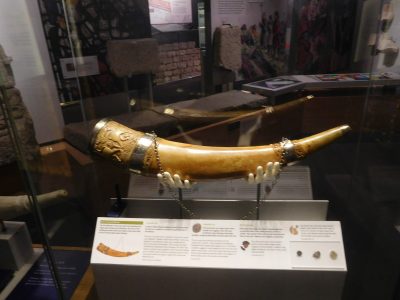
The current rendition of the Cathedral dates from the 12th century. You can ask Mr. Google if you need more history. I can give you photos.
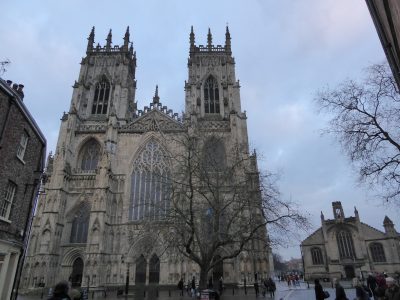
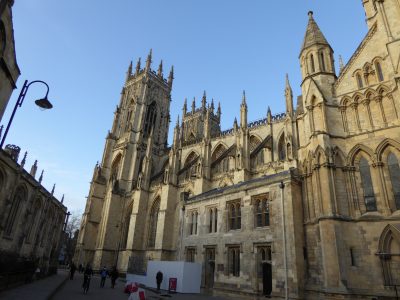
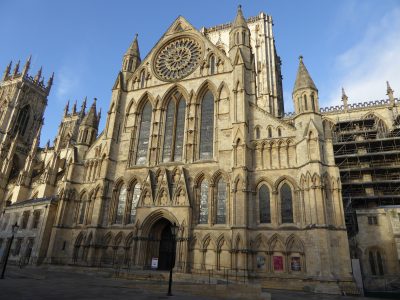
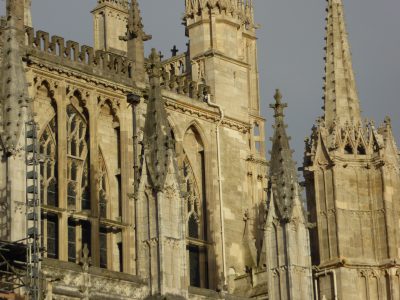

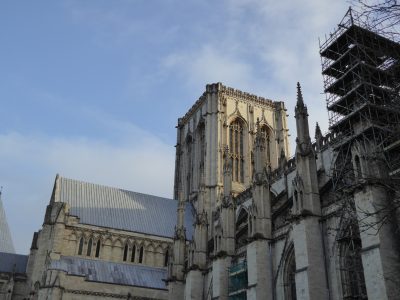
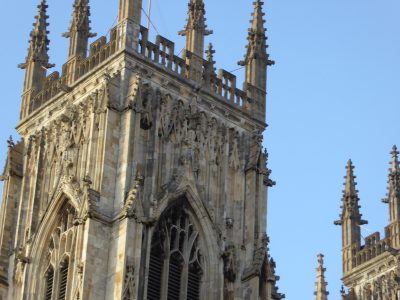
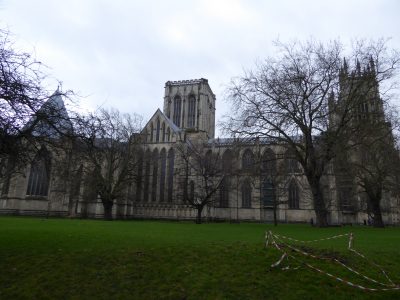
It is much larger in person than photos can ever do justice and just to add to the impression the organ was being tuned whilst I was there. Seriously loud! But cool at the same time.
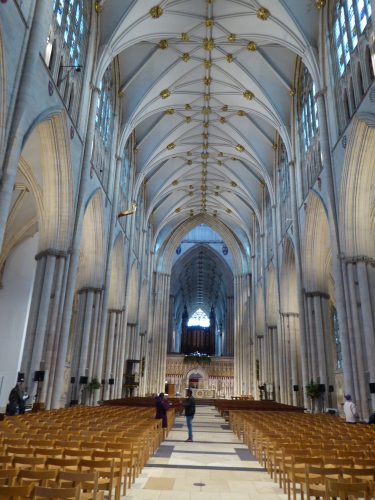
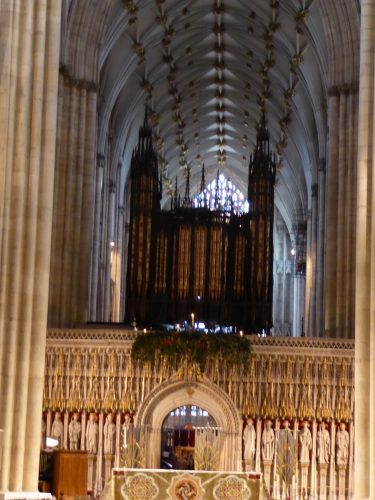
“The Kings’ Screen, also known as the Quire Screen, is one of the most famous parts of York Minster. The screen was designed around 1420 and features English kings ranging from William the Conqueror to Henry VI.” FYI, Quire is where the choir sings,
.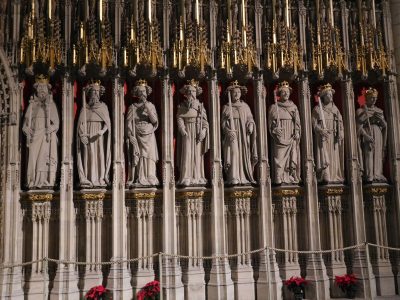
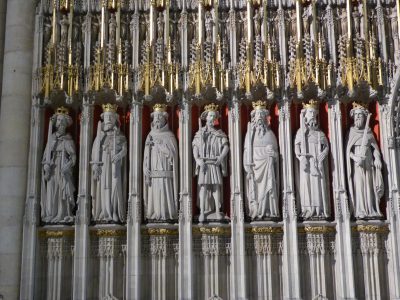
These ‘semaphore” statues were created without heads in 2004 to show that there are other means to communicate, not to match the Reformation damage to other statues. They spell out “Christ is Here”
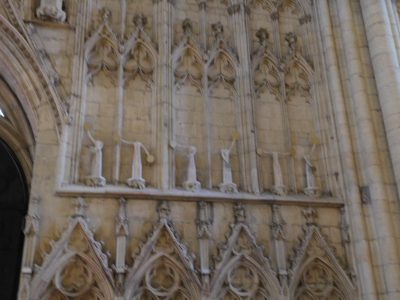
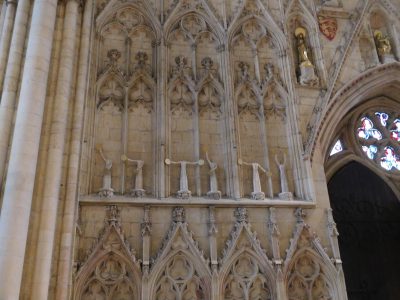
The eagle at Episcopal church pulpits signify the spreading of God’s word over the earth. And the second photo shows the view of the preacher looking towards the choir.
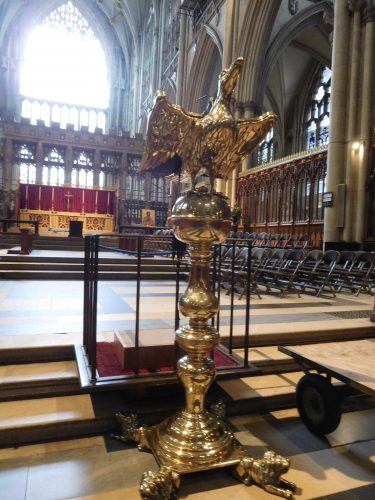
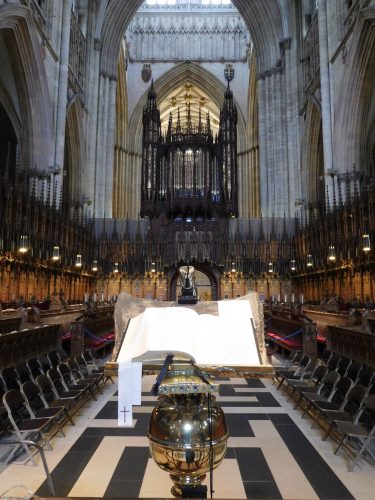
But from inside what really stands out are the many huge stained glass windows.
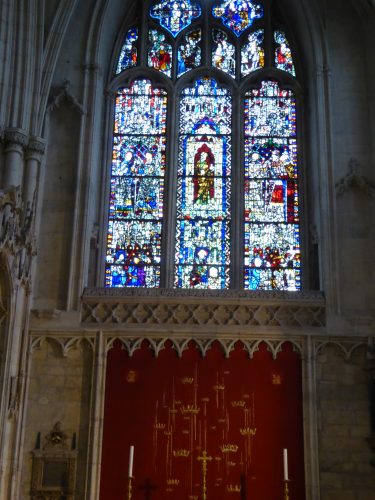


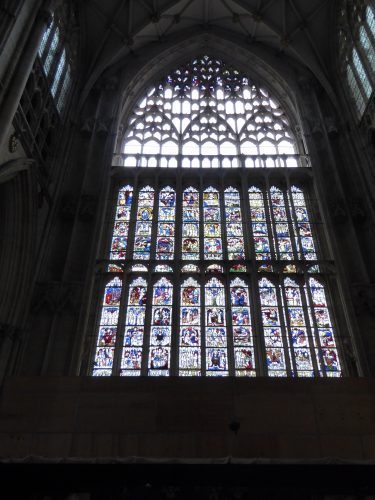
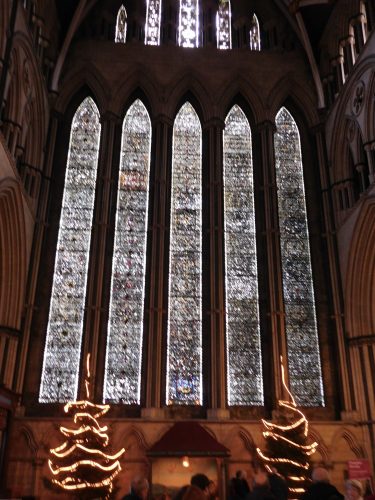
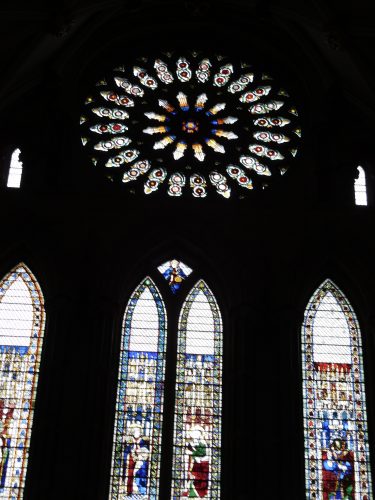
The one with the clear windows on top is being refurbished, an ongoing process costing, I believe north of £10m. These windows suffer damage both from external forces and internal. The latter is mostly due to condensation so to protect them from future damage the outsides so they have instituted a procedure that has a covering of glass with openings at both the top and bottom. This allows air to circulate thus hopefully eliminating the problem. The round Rose Window took its present form around 1515 and commemorates the union of the royal houses of York and Lancaster.
Often you will see war memorials established in church grounds but this WWII one really caught me.
“When you go home tell them of us and say for your tomorrow we gave our today”
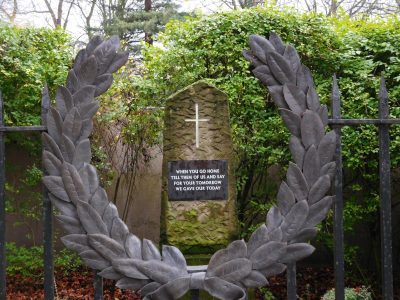
{ 0 comments… add one now }